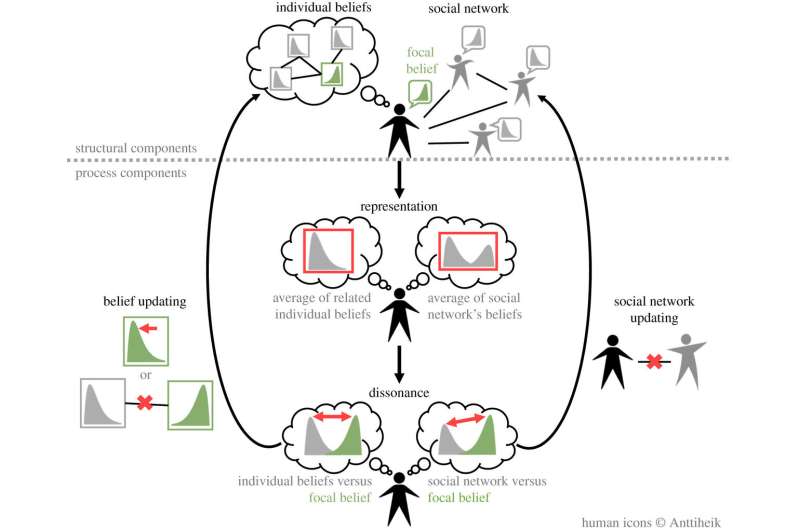Scientists bridge disparate approaches to belief dynamics

Why do individuals change some beliefs quickly, but fiercely resist changing other beliefs? On issues like climate change, vaccinations, and genetically modified foods, we're heavily influenced not only by the people around us, but also by the information we receive, our environments, and our individual cognition.
How we form and change our beliefs is a scientific question with profound social implications. It has attracted psychologists, sociologists, physicists, and network scientists—each discipline bringing its own techniques and models. What's lacking, according to SFI Professor Mirta Galesic, is a common framework to unite them.
In a new paper published in the Journal of the Royal Society Interface, Galesic and her SFI co-authors outline "a unifying quantitative framework that enables theoretical and empirical comparisons of different belief dynamic models." The framework bridges several divides between current approaches to belief dynamics—most notably, between abstract models that focus on large groups and more finely-grained, individual models of cognitive processes.
In future publications, the researchers will test the predictive power of the new framework on real-world survey data around contemporary issues.
"Integrating social and cognitive aspects of belief dynamics: towards a unifying framework" is published in the Journal of the Royal Society Interface.
More information: Mirta Galesic et al. Integrating social and cognitive aspects of belief dynamics: towards a unifying framework, Journal of The Royal Society Interface (2021). DOI: 10.1098/rsif.2020.0857
Journal information: Journal of the Royal Society Interface
Provided by Santa Fe Institute

















